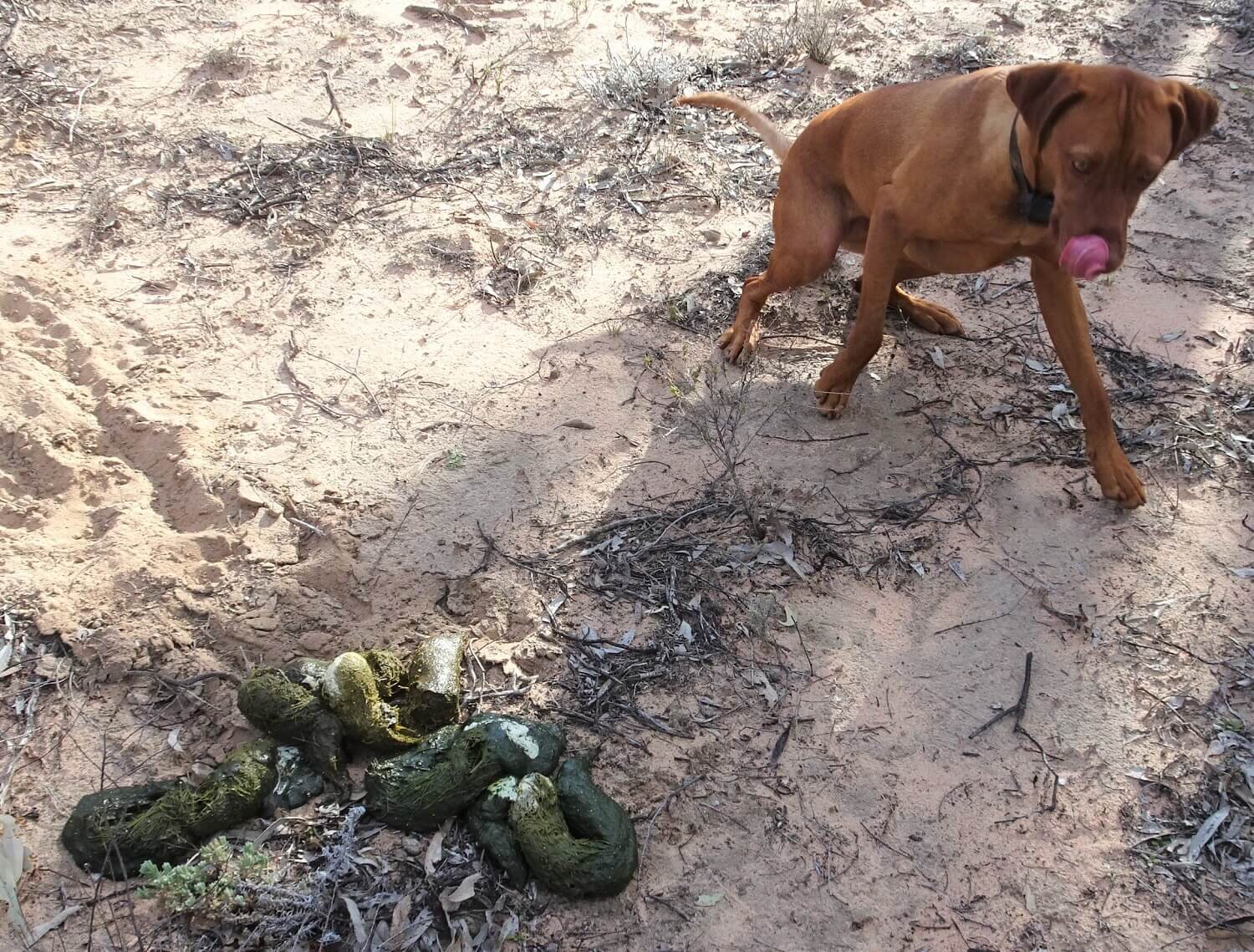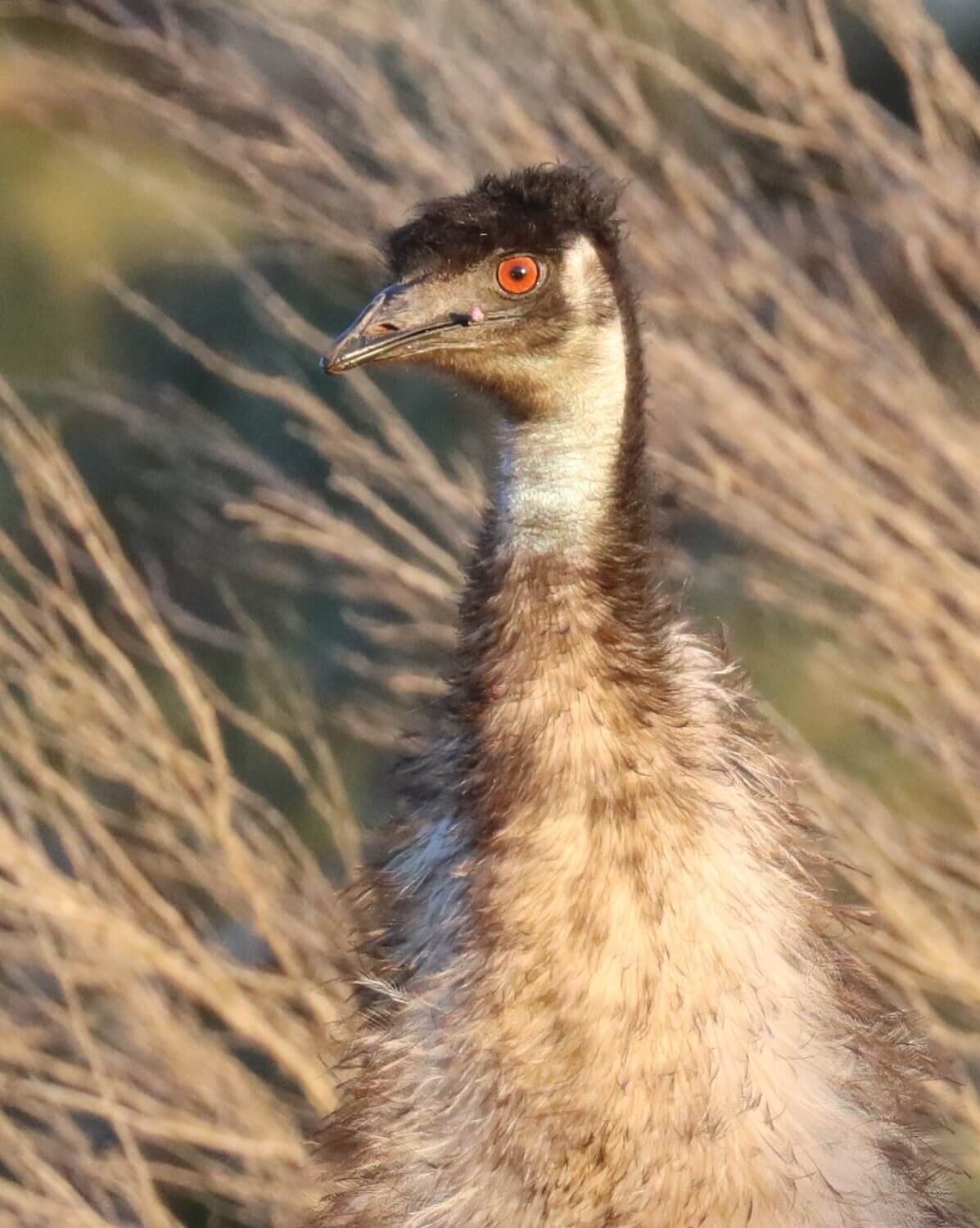Emu poo
It’s August. Dark Emu is in the sky and the emus have laid their eggs.
But I’ve been looking at emu poo. It’s fascinating what they eat, and what grows from the poo! I'm always searching for revegetation techniques to make it easier to establish plants in our dry climate. Perhaps I can just collect emu poo and distribute it where I want plants to grow?
Emus eat a huge variety of plants (and occasionally insects) and are particularly good at eating large seeds like Quandong (Santalum acuminatum). They are classic generalist feeders - “I wonder what that is? I’ll eat it and find out”. And as they eat and walk, they also poo: all over the place. Dunstan et al. (1) summarised: “Emus have gut-retention times ranging from 3–5 hours to several days and even 10 months for seeds of Sandalwood (Santalum spicatum) and their normal walking pace is 7 km per hour, covering linear distances of up to 13.5 km daily.”
These traits: generalist diet, long gut retention times, and being highly mobile make them important seed dispersers, particularly for long-distance dispersal. The occasional transport of seed great distances from the parent plant is important for gene flow and genetic diversity, as well as facilitating the expansion of the normal range of a plant (2, 3).
My new favorite word is endozoochory (along with apricity - the warmth of the sunshine on a Winter’s day - thanks Maaike). Endozoochory is seed dispersal following ingestion by vertebrate animals (mostly birds and mammals).
Scientists in Western Australia are far more avid poo-collectors than I. They found seeds of 77 plant species in the 112 droppings they collected (3). Closer to home, researchers in semi-arid New South Wales, who are also avid poo collectors, found seeds of 29 plant species in the 221 droppings they collected (1). Particularly in semi-arid areas, the most common seeds eaten were those from plants that had fleshy seeds, like Ruby Saltbush (Enchylaena tomentosa), Common Emu-bush (Eremophila glabra) and Nitre-bush (Nitraria billardierei), Berrigan (Eremophila longifolia) and Sweet Quandong (Santalum acuminatum). So I’m amongst good company, there’s nothing weird at all about a carousel of poo photos.










I’m also interested in emu poo which is full of Belah (Casuaria pauper) or Buloke (Allocasuarina luehmannii) cones. These semi-arid tree species produce seedlings only occasionally. I wondered if passing through an emu helped create a poo microhabitat to help seedlings grow. For many months last year, I watered poo filled with Casuarina cones but nothing happened. Perhaps the unpalatable woody Casuarina cones, along with other woody seeds and fruits, might actually be consumed to act as gastroliths in the emu gut (1). Gastroliths are usually stones. They are found in the stomachs of herbivorous birds and help to grind and mix the food, and aid digestion.
I’ve also come across emu poo containing lots of charcoal. Perhaps the emus are self-medicating? Charcoal is known to absorb toxins from the gut, such as toxic phenols. Or the charcoal could just be another type of gastrolith. Glass, wood and bits of metal found in emu guts are also thought to be selected as gastroliths (1).
I used the word poo 12 times in this post. So, to leave on a more refined note, here are some berries before they get eaten and become … poo.
More information
A September blog post on emu eggs and chicks is here
Dunstan et al. (2013) Dietary characteristics of Emus (Dromaius novaehollandiae) in semi-arid New South Wales, Australia, and dispersal and germination of ingested seeds https://www.publish.csiro.au/MU/MU12061
Nield et al. (2019) The spatial complexity of seed movement: Animal-generated seed dispersal patterns in fragmented landscapes revealed by animal movement models https://besjournals.onlinelibrary.wiley.com/doi/epdf/10.1111/1365-2745.13287
Calvino-Cansela et al. (2006) Emus as non-standard seed dispersers and their potential for long-distance dispersal. https://onlinelibrary.wiley.com/doi/epdf/10.1111/j.0906-7590.2006.04677.x
A reader shared this poem with me, for which I am grateful:
Canorous
I chanced upon
A pat of Emu dung
From which sprouted
A diminutive emerald forest
Of Ruby Saltbush
By such banal complex things
The Cosmic harp is strung.
By Cinclosoma










